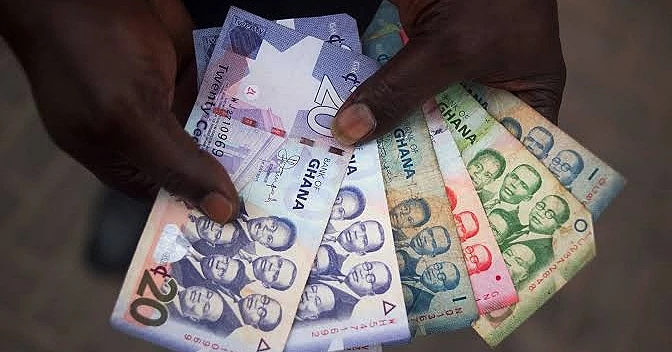A Strategic Turn in Ghana’s Monetary Policy and Its Ripple Effects
Last week, the Bank of Ghana slashed its Monetary Policy Rate (MPR) by 300 basis points to 25.0 percent, marking its most aggressive single reduction since July 2024 and March 2018. The decision came at the conclusion of the 125th Monetary Policy Committee meeting and reflects growing confidence in the country’s disinflation trajectory and macroeconomic stability. Governor Dr. Johnson Asiama noted that sustained disinflation, fiscal consolidation, and prior tightening measures have anchored inflation expectations, creating room to ease monetary conditions. This bold move aims to catalyse private sector credit expansion and support the ongoing recovery in business activity.
The MPR cut was propelled by a significant fall in headline inflation, which dipped to 13.7 percent in June 2025—the lowest since December 2021—down from a peak of 54 percent at the end of 2022. Tight monetary policy, improved food supply conditions, and a stronger cedi all contributed to the disinflation trend, reinforcing the Committee’s view that conditions can safely accommodate lower borrowing costs. Meanwhile, short-term interest rates across the money market have declined sharply, reducing government borrowing costs and signalling broader easing. Despite global headwinds—geopolitical tensions, tariff disputes, and pending utility tariff adjustments—domestic data painted a clear path for relief in lending rates.
A glance at historical policy rates underscores the dramatic shift. Since the inception of the rediscount rate in the early 2000s, through the bank rate and prime rate eras, the MPR has oscillated widely. It hit record highs of 29.50 percent in May 2023 before inching down in the months leading up to the current reduction. Conversely, the MPR bottomed at 12.50 percent in January 2012 amid protracted disinflation. The latest cut to 25 percent not only reverses much of the steep hiking cycle of 2022–23 but also aligns with the Bank’s medium-term inflation target of 8 ± 2 percent by year’s end.
Analysts have pointed out that lower benchmark rates should translate into reduced Average Lending Rates (ALR) and Ghana Reference Rates (GRR) at commercial banks. Indeed, the ALR declined from 30.75 percent in January to 27.0 percent in June, a cumulative drop of 375 basis points. However, the pass-through from policy to lending rates often faces lags driven by banks’ funding costs, liquidity considerations, and risk buffers. Even with a lower MPR, banks may hesitate to cut their lending spreads immediately if deposit rates, non-performing loan provisions, and operational costs remain elevated.
When setting lending rates, banks typically reference the policy rate as a cap while adding margins reflecting credit risk and funding costs. They incorporate the prevailing Treasury bill and interbank rates, their own cost of funds, overheads, and a risk premium determined by the “Five Cs”: character (borrower credit history), capacity (ability to repay), capital (borrower’s equity), collateral (assets pledged), and conditions (economic environment). This multi-factor approach means that while the MPR provides a lower bound, actual borrowing costs hinge on borrower profiles and market conditions.
In other developments, the Bank of Ghana has expanded its licensing regime to include three credit-reference bureaus—Dun & Bradstreet, MyCredit Score and XDS Data—marking the formal establishment of a unified credit-information framework in Ghana. By aggregating and standardising corporate and individual credit histories, these licensed bureaus enhance market transparency and respond to longstanding calls for reliable data in the debt markets. With independent, rigorously verified credit reports, financial institutions can more accurately assess default risk, issuers can benchmark borrowing terms with greater precision, and pricing efficiencies across both loan and bond markets should improve. Over time, a robust credit-reference system is expected to deepen Ghana’s corporate bond market, reduce information asymmetry, and lower financing costs for creditworthy borrowers.
July’s headline inflation fell further to 12.1 percent, marking the seventh consecutive monthly decline and the lowest rate since October 2021. On a monthly basis, prices still rose by 0.7 percent, highlighting persistent short-term pressures. Simultaneously, the cedi has appreciated against the dollar—trading at around GHS 10.50 per USD at end-July, down from over GHS 15.50 in March 2025—prompting banks to consider hedging strategies in a bid to preserve margins as Treasury bill yields compress. The dual trends of lower domestic rates and a firmer currency complicate the pass-through dynamic, as banks weigh currency risk alongside credit pricing.
For businesses, the MPR reduction promises cheaper short-term funding, improved working capital financing, and enhanced cash flow management. Lower policy rates can reduce the cost of overdrafts, inventory loans, and project financing, thereby supporting expansion plans and easing liquidity constraints. However, the full benefit hinges on banks’ willingness to adjust lending rates promptly and on firms’ creditworthiness. In an environment still shaped by currency volatility, inflation risks, and evolving regulatory standards—including the new credit rating regime—businesses must navigate carefully to leverage these monetary tailwinds effectively.
Beyond headline rate adjustments, the interplay between inflation, exchange rates, credit infrastructure, and bank lending practices will define Ghana’s growth trajectory in the latter half of 2025. As the central bank signals readiness for further easing, close monitoring of transmission channels, borrower risk profiles, and global headwinds remains crucial for policymakers, financial institutions, and businesses alike.
Recommendation
Businesses should proactively reassess their financing strategies in light of the recent MPR reduction by exploring opportunities for lower-cost credit, renegotiating existing loan terms, and prioritising investments that yield medium-term returns. Firms should also strengthen their credit profiles by improving financial disclosures and collateral quality to benefit from emerging credit rating systems. Given the volatility in exchange rates and declining T-bill yields, businesses must adopt prudent hedging strategies and diversify revenue streams to mitigate currency and interest rate risks while positioning themselves for growth in a gradually easing monetary environment.








